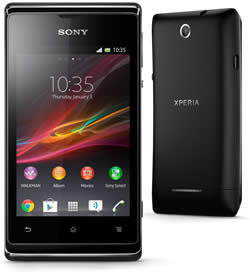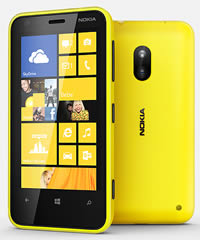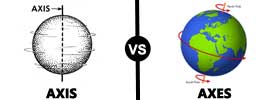Difference between Sony Xperia E and Nokia Lumia 620
Key difference: The Sony Xperia E and E-Dual are two entry-level phones from Sony Mobile. The phone comes with a 3.5 TFT capacitive that has a ~165 ppi pixel density. It comes with a 1 GHz Cortex-A5 Qualcomm Snapdragon processor, an Adreno 200 GPU and 512 MB RAM. Nokia Lumia 620 features a 3.8-inch screen with a resolution of 480 x 800 pixels. It features a Qualcomm Snapdragon S4 Dual-core 1 GHz Krait and a 512 MB RAM. It has an 8 GB internal storage capacity and an external storage expandable up to 64 GB.
 Sony is a popular smartphone company and has been launching popular phones under the Xperia Brand. Since, its separation with Ericsson, the company has introduced multiple phones in different ranges to cater to all types of demands. The widespread demand of smartphones has required many companies to start manufacturing low-end phones for the masses. The new 2013 line-up of Sony phones include the Sony Xperia E and E-Dual phones. These phones are identical to each other and only differ in some features.
Sony is a popular smartphone company and has been launching popular phones under the Xperia Brand. Since, its separation with Ericsson, the company has introduced multiple phones in different ranges to cater to all types of demands. The widespread demand of smartphones has required many companies to start manufacturing low-end phones for the masses. The new 2013 line-up of Sony phones include the Sony Xperia E and E-Dual phones. These phones are identical to each other and only differ in some features.
The Sony Xperia E and E-Dual are two entry-level phones from Sony Mobile. These are the few of the cheapest models available on the market that have pretty decent features for a low-end phone. The phone has similar design themes to the older Sony phones with a slight inward curve and has shaved a lot of back bulk. The phone is slim and straight and is easy to operate using one hand. The company has also ditched the cheap, plastic back and replaced with it a rubber matte finish. This makes the back prone to fingerprint smudges, while the front screen is completely prone to fingerprints and dust smudges.
The front of the phone has a 3.5-inch display screen with three capacitive (Home, Menu and Back) buttons on the bottom. Above the screen is the earpiece, a hidden status LED and the proximity sensor. On the top end of the device, there is just a 3.5mm headphone jack, while the left side has a microUSB port. The bottom of the screen has a small LED light, while the right side of the device holds the volume rocker, power button and the dedicated camera key. The back of the devices holds the camera on the top and the loud speaker grille on the bottom.
The phone comes with a 3.5 TFT capacitive that has a ~165 ppi pixel density. In terms of technology these days, the resolution and the density is pretty weak, but as this is a entry-level the resolution is decent for the price. However, do not expect high definition resolution. The phone has pretty low contrast and poor viewing angles. The screen is made using scratch-resistant glass proving some sort of protection from scratches. The phone comes with the traditional Sony Timescape UI, which means it comes with certain built-in Timescape applications that are not removable.
In terms of speed and power, the phone is good for an entry-level model. It comes with a 1 GHz Cortex-A5 Qualcomm Snapdragon processor, an Adreno 200 GPU and 512 MB RAM. The phone supports 2G and 3G but not 4G. The Xperia E comes with Android 4.1 Jelly Bean out of the box, which is a good set-up. The Xperia E-Dual comes with Android 4.0.4 Ice Cream Sandwihch but can be upgraded to Jelly Bean. The Jelly Bean comes with all of the special features of Google, including Google Now. There are few modifications to the Android software. Upon unlocking the screen, the home screen has five screens, which are customizable. The differences between the ICS and Jelly Bean can be read in the article, The Difference between Ice Cream Sandwich and Jelly Bean on the website.
The major difference between the E and the E-Dual is that E-Dual supports dual SIM technology, while the E only supports single SIM. Both the phones come with a 3.15 MP back camera with a few features such as 4x digital zoom, Geotagging, Self-timer, Send to web and Touch capture. The camera does not have a great picture taking capability and has low resolution, but is okay for an entry-level phone. The phones also do not have a secondary camera, which means no video conferencing. However, it does have VGA video recording capability. The phone comes with 4 GB internal memory, of which 2 GB is available to the user and the memory is expandable up to 32 GB via microUSB card.
The phones come with a removable Li-Ion 1530 mAh battery that provides an okay battery capacity for an entry-level phone. The phone is considered as a no-nonsense android phone. The phone is a good entry-level phone and offers good features for its price. However, the person would have to sacrifice on secondary camera, photo resolution and a few features. The phone also offers certain neat features such as Overview mode (allows zooming out to see all open applications), Face Unlock, Wi-Fi tethering, Google Apps and Hand writing recognition.
 Nokia, the Finnish multinational communications and information technology corporation, is known for it highly durable mobile phones. However, with the increasing onset of smartphones, the sales of Nokia’s simple but durable phones started to drop. To offset this trend, Nokia tied up with Microsoft to launch a series of smartphones based on Microsoft’s Windows. This series of phones branded as Nokia Lumia run on Microsoft Windows Mobile 8.
Nokia, the Finnish multinational communications and information technology corporation, is known for it highly durable mobile phones. However, with the increasing onset of smartphones, the sales of Nokia’s simple but durable phones started to drop. To offset this trend, Nokia tied up with Microsoft to launch a series of smartphones based on Microsoft’s Windows. This series of phones branded as Nokia Lumia run on Microsoft Windows Mobile 8.
One of the newest smartphones under the brand is the Nokia Lumia 620. Nokia Lumia 620 is aimed at the entry-level buyers who want to try a Windows Phone 8 but can’t afford to spend too much on it. The phone is a decent enough piece of merchandise, especially considering its price. It features a 3.8-inch screen with a resolution of 480 x 800 pixels. It features a Qualcomm Snapdragon S4 Dual-core 1 GHz Krait and a 512 MB RAM. It has an 8 GB internal storage capacity and an external storage expandable up to 64 GB.
The Nokia Lumia 620 has a 5 MP camera with auto focus and LED flash, as well as a secondary front-facing VGA camera. The phone like most of the phones under the Lumia brand is available in a variety of bright colors, such as lime green, orange, magenta, yellow, cyan, and the usually white and black. In fact, the phone comes with back panels in these colors allowing the user to change the phone’s color every few days.
However, the phone has been criticized as looking a bit plasticky and cheap. The phone is also a bit on the heavier side. Another issue with the phone, in fact all the Windows phones, is that it comes with the Internet Explorer browser built-in, which can be quite lagging at times, and the phones do not support any other browsers. Furthermore, the collection of apps available on Windows is quite limited, especially as compared to the apps available for Android and Apple.
The information for the detailed table about the two phones has been taken from Sony Mobile website, Nokia website, techradar.com and GSMArena.com. Unless specified, the information is the same for both phones.
|
|
Sony Xperia E/E-Dual |
Nokia Lumia 620 |
|
Launch Date |
E: March 2013 E-Dual: January 2013 |
January 2013 |
|
Company |
Sony Mobiles |
Nokia |
|
Size |
113.5 x 61.8 x 11.0 mm |
115.4 x 61.1 x 11 mm, 76 cc (4.54 x 2.41 x 0.43 in) |
|
Display |
3.5-inch TFT capacitive touchscreen, 256K colors |
TFT capacitive touchscreen, 16M colors |
|
Screen |
320 x 480 pixels (~165 ppi pixel density) |
480 x 800 pixels, 3.8 inches (~246 ppi pixel density) |
|
Protection |
Scratch-resistant glass |
ClearBlack display |
|
Weight |
115.7 grams |
127 g (4.48 oz) |
|
2G Network |
GSM 850 / 900 / 1800 / 1900 - SIM 1 & SIM 2 |
GSM 850 / 900 / 1800 / 1900 |
|
3G Network |
E: HSDPA 900 / 2100 - C1505 HSDPA 850 / 1900 / 2100 - C1504 E-Dual: HSDPA 900 / 2100 - C1605 HSDPA 850 / 1900 / 2100 - C1604 |
HSDPA 850 / 900 / 1900 / 2100 |
|
4G Network |
N/A |
No |
|
GUI |
Timescape UI |
Microsoft Windows Phone 8 |
|
CPU speed |
1 GHz Cortex-A5 |
Dual-core 1 GHz Krait |
|
GPU |
Adreno 200 |
Adreno 305 |
|
OS |
E: Android OS, v4.1 (Jelly Bean) E-Dual: Android OS, v4.0.4 (ICS) upgradeable to 4.1 Jelly Bean |
Microsoft Windows Phone 8 |
|
Chipset |
Qualcomm Snapdragon™ MSM7227A |
Qualcomm Snapdragon S4 |
|
RAM |
512 MB |
512 MB |
|
SIM Size |
E: miniSIM E-Dual: miniSIM (Dual SIM) |
Micro-SIM |
|
Internal Memory |
Up to 4 GB (2 GB user available) |
8 GB |
|
Expandable Memory |
Up to 32 GB |
microSD, up to 64 GB |
|
Sensors |
Accelerometer, Proximity sensor |
Accelerometer, compass, Polarization filter, Brightness control, Orientation sensor, Proximity sensor, RGB Stripe, Sunlight readability enhancements, Color boosting, Ambient light sensor |
|
Connectivity |
2G, 3G, DLNA Certified, HD Voice, Noise supression |
Micro-USB charging connector, 3.5 mm audio connector, Micro-USB-B connector, USB 2.0, Bluetooth 3.0, Wi-Fi, NFC |
|
Data |
GPRS, EDGE, WLAN, Bluetooth, USB |
GPRS, EDGE, WLAN, Bluetooth, USB, NFC |
|
Speed |
HSDPA, 7.2 Mbps; HSUPA, 5.76 Mbps |
HSDPA, 21 Mbps; HSUPA, 5.76 Mbps |
|
WLAN |
Wi-Fi 802.11 b/g/n, DLNA, Wi-Fi hotspot |
Wi-Fi 802.11 a/b/g/n, dual-band |
|
Bluetooth |
Bluetooth v2.1, EDR |
Yes, v3.0 with A2DP, EDR |
|
USB |
microUSB v2.0 |
microUSB v2.0 |
|
Primary Camera |
3.15 MP, 2048x1536 pixels |
5 MP, 2592х1936 pixels, autofocus, LED flash |
|
Secondary Camera |
N/A |
VGA - 640 x 480 pixels |
|
Video |
VGA@30fps |
Yes, 720p@30fps |
|
Camera Features |
|
|
|
Sound Enhancement |
xLOUD Experience – audio filter technology; Active noise cancellation with dedicated mic; Manual equalizer |
Active noise cancellation with dedicated mic, Audio Equalizer |
|
Audio supported formats |
MP3 (.mp3), 3GPP (.3gp), MP4 (.mp4, .m4a), SMF (.mid), WAV (.wav), OTA (.ota), Ogg (.ogg) |
MP3, AMR-WB, AMR-NB, WMA 10 Pro, WMA 9, AAC LC, AAC+/HEAAC, eAAC+/HEAACv2 |
|
Video supported formats |
3GPP (.3gp), MP4 (.mp4) |
VC-1, H.264/AVC, H.263, MPEG-4; MP4, WMV, 3GP, M4V |
|
Battery Capacity |
Removable Li-Ion 1530 mAh battery |
Li-Ion 1300 mAh battery (BL-4J) |
|
Talk time |
2G: 6 hours 12 min 3G: 6 hours 18 min |
2G talk time: 14.6 hours 3G talk time: 9.9 hours |
|
Stand-by |
E: 2G: 530 hours 3G: 530 hours E-Dual: 2G: 368 hours 3G: 379 hours |
330 hours |
|
Available Colors |
E: Black, Pink and White E-Dual: Black and Gold |
Lime green, orange, magenta, yellow, cyan, white, black |
|
Messaging |
Conversations, Email, Gmail™, Handwriting recognition, Instant messaging, Multimedia messaging (MMS), Predictive text input, Text messaging (SMS) |
SMS (threaded view), MMS, Email, Push Email, IM |
|
Browser |
HTML5 |
HTML5 |
|
Radio |
Radio (FM radio with RDS) |
No |
|
GPS |
GPS with A-GPS support |
Yes, with A-GPS support and GLONASS |
|
Java |
via Java MIDP emulator |
No |
|
Additional Features |
|
|
Image Courtesy: sonymobile.com, nokia.com









Add new comment